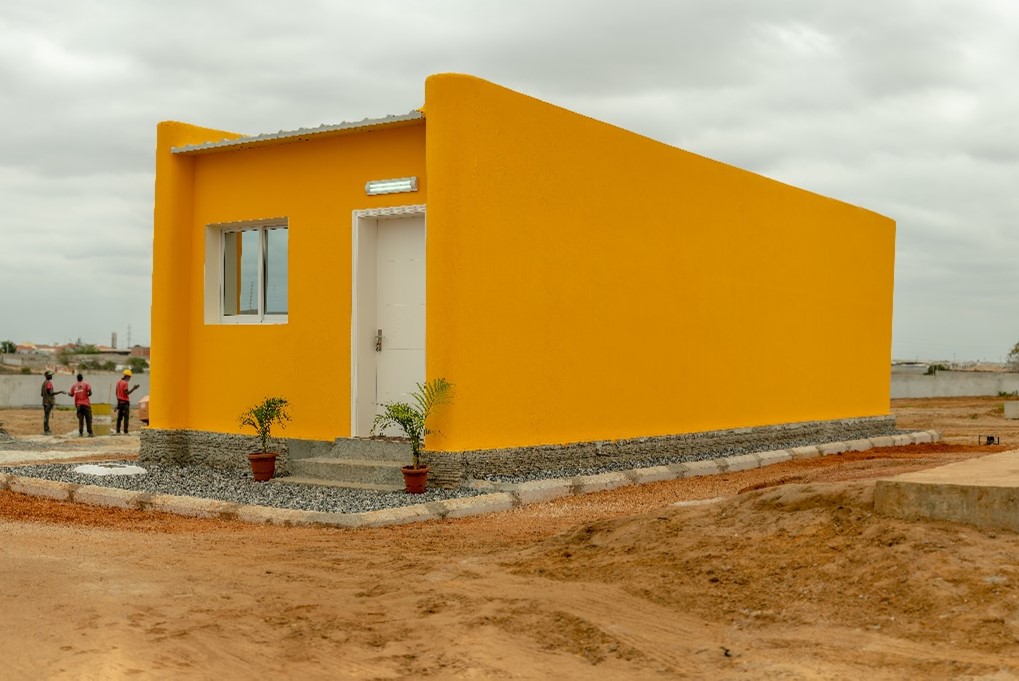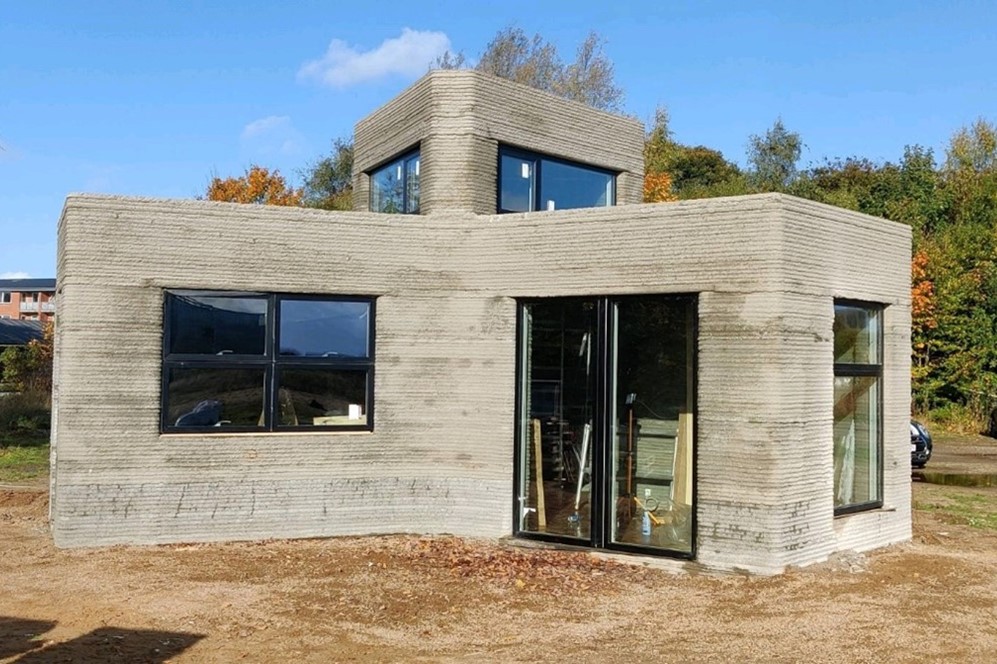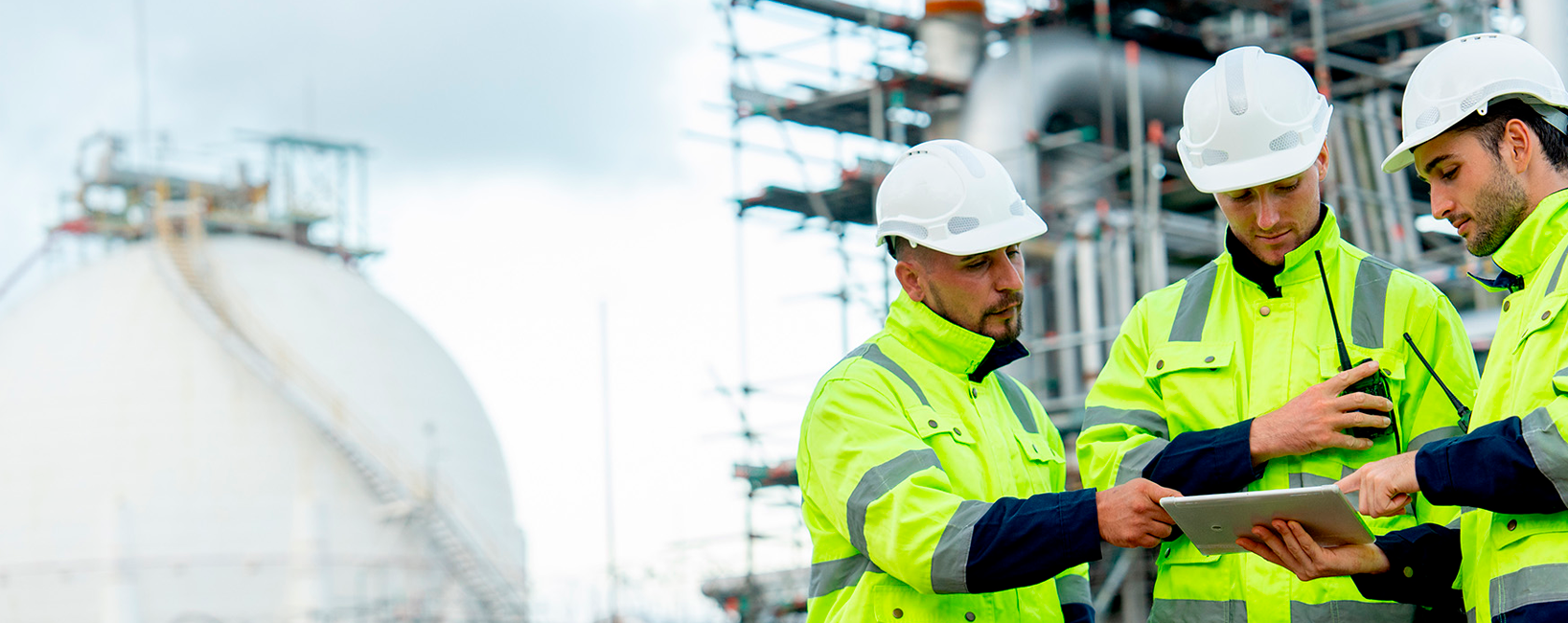Hindsight is 20/20, but many thought leaders categorically agree that we are currently on the brink of a fourth industrial revolution. The first industrial revolution brought us mechanized production, the second, mass production, and the third, automated production. Now, we find ourselves at another juncture in history.
So, what will the fourth industrial revolution bring? With the current speed of technological R&D, it’s hard to imagine what our future will be like 10, 20, even 50 years from now. What is certain, however, is that the appearance of these new technologies will disrupt every industry in all geographies – including one of the most notoriously slow to digitize, the construction industry. In fact, advancements in robotics have led to the appearance and adoption of new technologies in construction such as 3D printing, also known as additive manufacturing, in commercial and residential construction.
One of the most popular uses of this technology is 3D printed houses. These structures have numerous benefits, not only for the companies that construct them, but also for society at large. 3D printing in construction can save businesses 60% in time and 80% in labor spent, so the advantages for early adaptors are numerous.
And who better to give us an in-depth look into 3D printed houses than Henrik Lund-Nielson, Founder & General Manager of COBOD International, the world leader in 3D construction printing solutions and startup in CEMEX Ventures’ investment portfolio, and Ibon Iribar, Investment and Open Innovation Advisor at CEMEX Ventures.
For our audience who may not be familiar, what is a 3D printed house and how is it built?
Ibon: Construction 3D printing (aka additive manufacturing) is the technology used in the construction industry to build houses, building components, or elements for infrastructures such as bridges. 3D-printed houses have already revolutionized the industry bringing cheaper, faster, and more sustainable housing solutions.
Before switching on the machine to print the desired house, there is a process that needs to be followed when it comes to this building technique:
- Creation of a prototype: An initial blueprint of the object to be printed is needed in a 3D printed construction. Indeed, there are several software programs that can be used to explore and identify how to satisfy the needs of the customer.
- Preparation of the 3D printer: The blueprint is shared with a 3D printer supplier, who will charge and process the design with the machine. In this preparation phase the raw materials needed to print the prototype are also identified and sourced.
- Printing: The machine starts printing layer by layer to make the foundations and the main walls of the house. In this process, also known as material extrusion, the material is heated and finally extruded layer by layer.
- Additional finishings: Once the main structure of a house is built, additional installations are needed to deliver a complete housing solution, such as plumbing, electrical installations, painting, windows, and doors, among others.
Generally, the basic structure of a house can be built in approximately 24h using 3D printing technology (the foundation and the structural walls).

Is this technology already available? Are there 3D printed houses for sale?
Ibon: In recent years, this building methodology has quickly transitioned from its demo stage to become a fully commercial product. There are already examples of 3D printed houses and projects developed in five continents, not only housing solutions themselves, but also bridges and components to railways, among others.
Even though there are several projects of 3D printed houses developed globally, there are still very few houses for sale. This is due to many different reasons, but in principle, to have a habitable 3D printed house, it must fulfill similar standards such as those buildings built by conventional methodologies. Only a select number of countries in the world have established the basis of the regulation and building codes for this type of 3D printed solution.
How much does it cost to build a 3D printed home?
Henrik: 3D printable concrete has the advantage that it is highly cost efficient, but a specific price cannot be given as it depends on the location of the print, the size of the building, the local building code requirements, and a lot of other factors.
The cost efficiency of 3D printable concrete comes from the automation of processes that leads to much, much fewer labor costs, as well as the fact that low-cost real concrete can be used without any cost of formwork. Never before has it been possible to use low-cost concrete without the cost of formwork, which traditionally implies excessive costs. Now, with 3D printing, this cost is removed from the mix.
The ability to print with low-cost real concrete was jointly developed by COBOD and CEMEX. The solution is called D.fab, short for digital fabrication. With the D.fab solution, 99% of the materials (cement, sand, and gravel) are locally sourced and only 1% of the D.fab admixtures, which comes from a central source, are required to make the material printable. This solution has a cost 5x-10x lower than dry-mix mortars, which all other 3D printing companies are working with.
In addition to the low cost, 3D printing speeds up execution of building projects significantly and allows much more freedom in terms of design.

What are the advantages of 3D printed houses? How do they solve certain pain points in the industry?
Ibon: Since 3D printing technology can cover almost all phases of the construction value chain, it can offer great benefits to the whole industry, revolutionizing the way houses are built. In this regard, it brings the following advantages:
- Time reduction: Using traditional methods, a project can take many months to complete, with most large projects taking 20% longer than expected and adding up to 80% in cost overruns over the initial budget. However, 3D printing can reduce time by 70%, since a project can be completed in just hours or days, depending on its magnitude.
- Cost effectiveness and sustainability: 3D printing emits a precise amount of material to be used to lift a structure, resulting in up to 60% less waste generated at the jobsite. Likewise, 3D printing means there is no surplus in the purchase of materials, which leads to a reduction in costs both in their purchase and subsequent storage.
- Reduction of labor costs: By reducing time and costs, companies will see an exponential increase in the benefits of this technology, which is also of great help in locations where there is a need for projects and a shortage of labor. By automating the creation of a structure through 3D printers, companies can see a reduction in labor costs of up to 80%.
- Safety: One of the most important benefits that 3D printing has brought to construction is in the health and safety of employees onsite. By knowing how to work effectively with printers, workers can do their jobs more easily and reduce injuries in the field.
- Design flexibility: Last-minute changes to the design will no longer be a problem, nor will they delay the construction process. 3D printing allows you to customize your work and make last-minute changes up until the start of printing of the structure, eliminating all the headaches that these changes usually entail.
In your opinion, what is the future of 3D printed houses?
Henrik: 3D printing is one of the world’s most promising technologies. 3D printed homes can combine design, functionality, low costs, and environmental benefits. 3D printing technology is a gamechanger in construction due to its low cost and speed of execution, at the same time as it brings new architecture to life that would otherwise not have been possible by conventional brick and mortar methods. Due to these advantages, 3D concrete printing in construction will be the go-to technology for more and more projects.
What are some examples of 3D printed housing projects?
Henrik: Together, CEMEX and COBOD have introduced the proprietary admixtures family called D.fab, which allows conventional concrete raw materials to be made into 3D printable concrete. This admixture innovation has lowered the price of the 3D printed buildings significantly compared to conventional methods and the other 3D printing solutions out there.

D.fab has been used for several projects in multiple countries like Canada, the U.S., Japan, Malaysia, Oman, Angola, Ireland, and Denmark. The very first project with the D.fab solution was completed in Luanda, Angola, in a small prototype home of around 570 square feet by tech startup, Power2Build. The D.fab solution allows builders to print homes anywhere using locally available concrete.

Another project is this house in Holstebro, Denmark printed by the 3DCP group. 3DCP Group printed a 37m2 tiny house, the first of its kind in Europe. The house is a masterpiece in terms of creating a fully livable house on as few square meters as possible, and the design was only really made possible due to the form freedom of 3D printed construction. To drive down the cost of the walls, the roof and the foundation were 3D printed using the D.fab low-cost real concrete solution.
CEMEX Ventures and 3D printing: Making the future a reality today
CEMEX Ventures recognizes the potential that 3D printing houses can have on the construction industry and society more generally. That’s why CEMEX Ventures has invested in 3D printing technology and continues to explore new avenues related to additive manufacturing.
Do you have an idea that will bring the future of construction to our fingertips today? If so, get in touch with us and let’s find synergies together!

